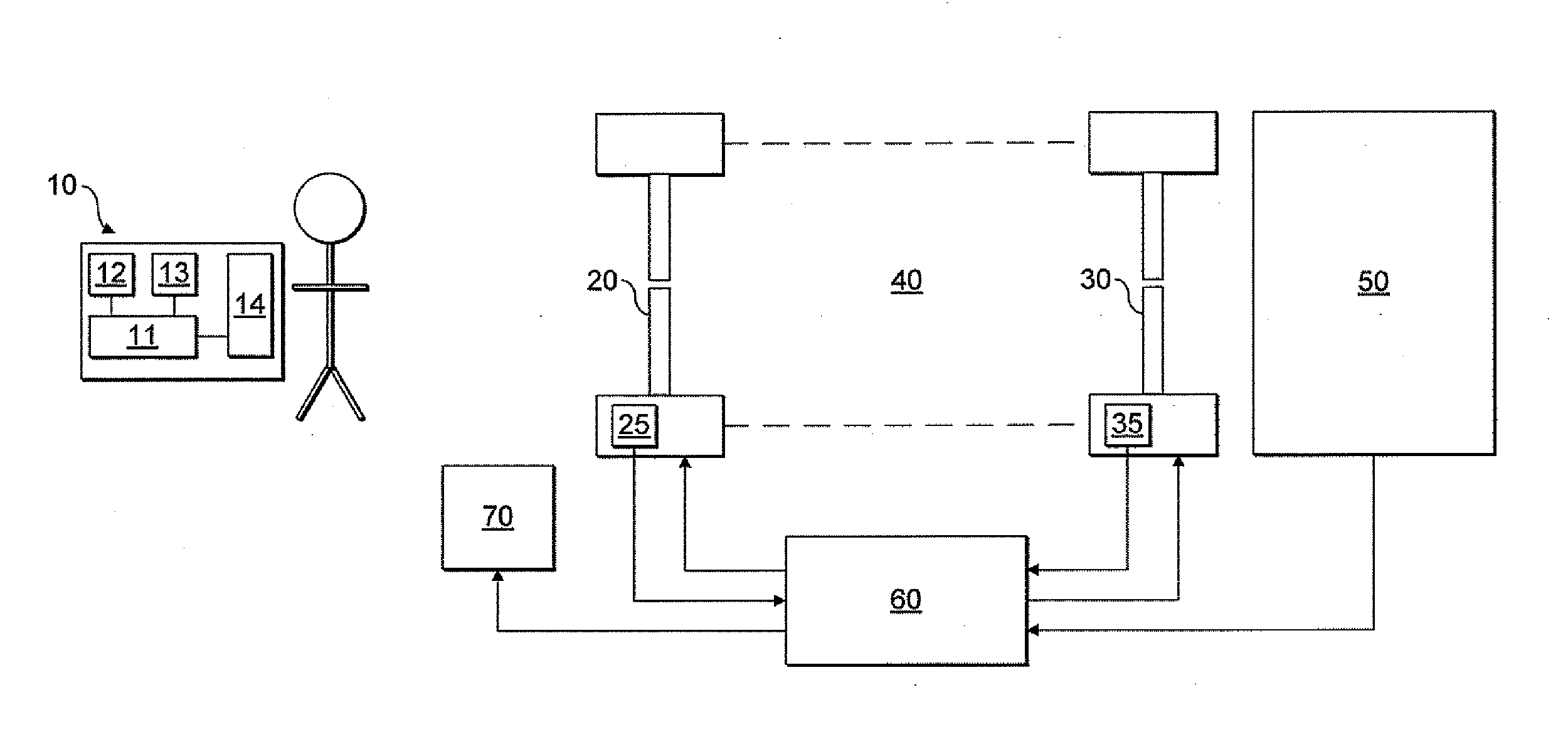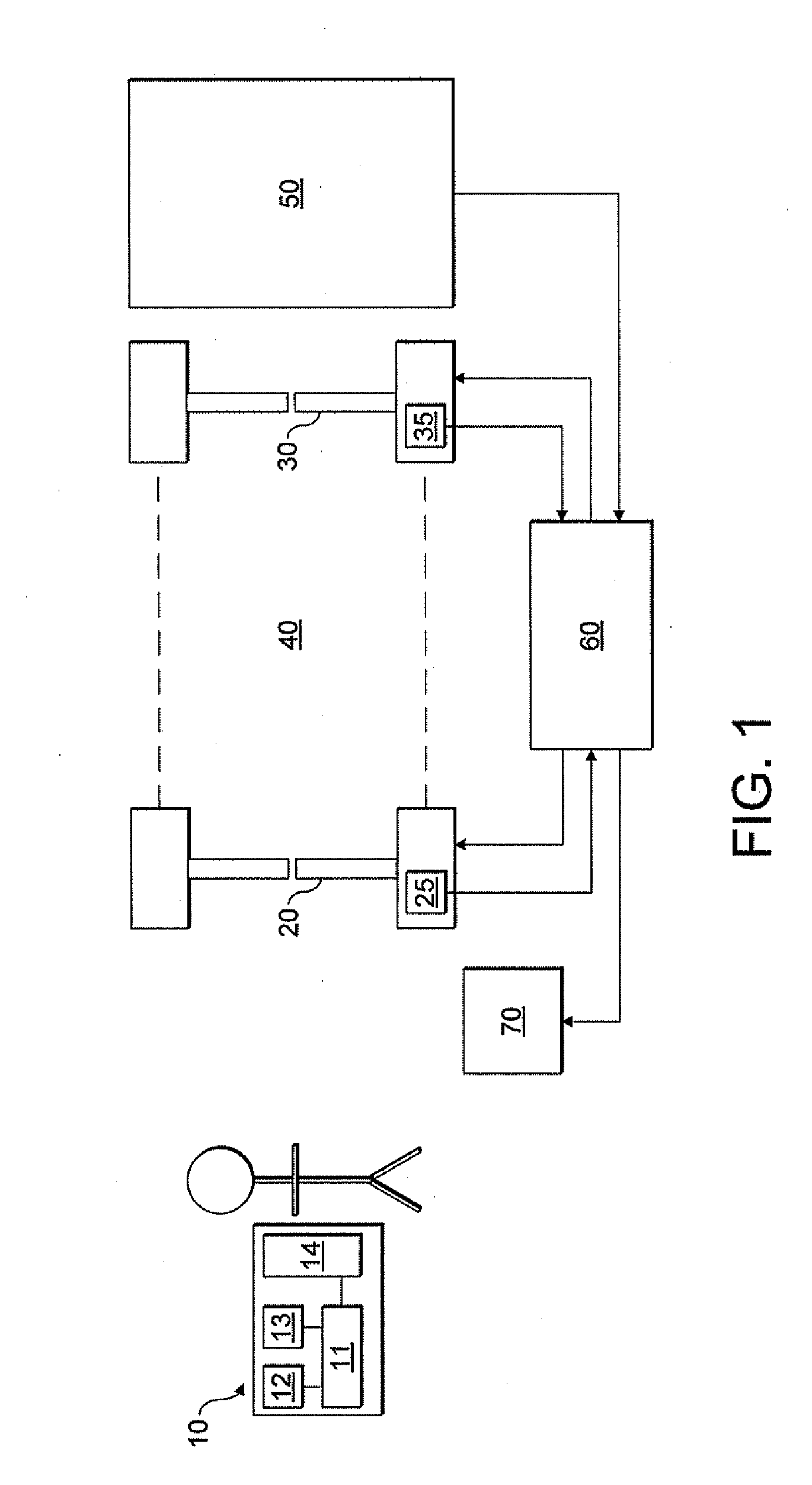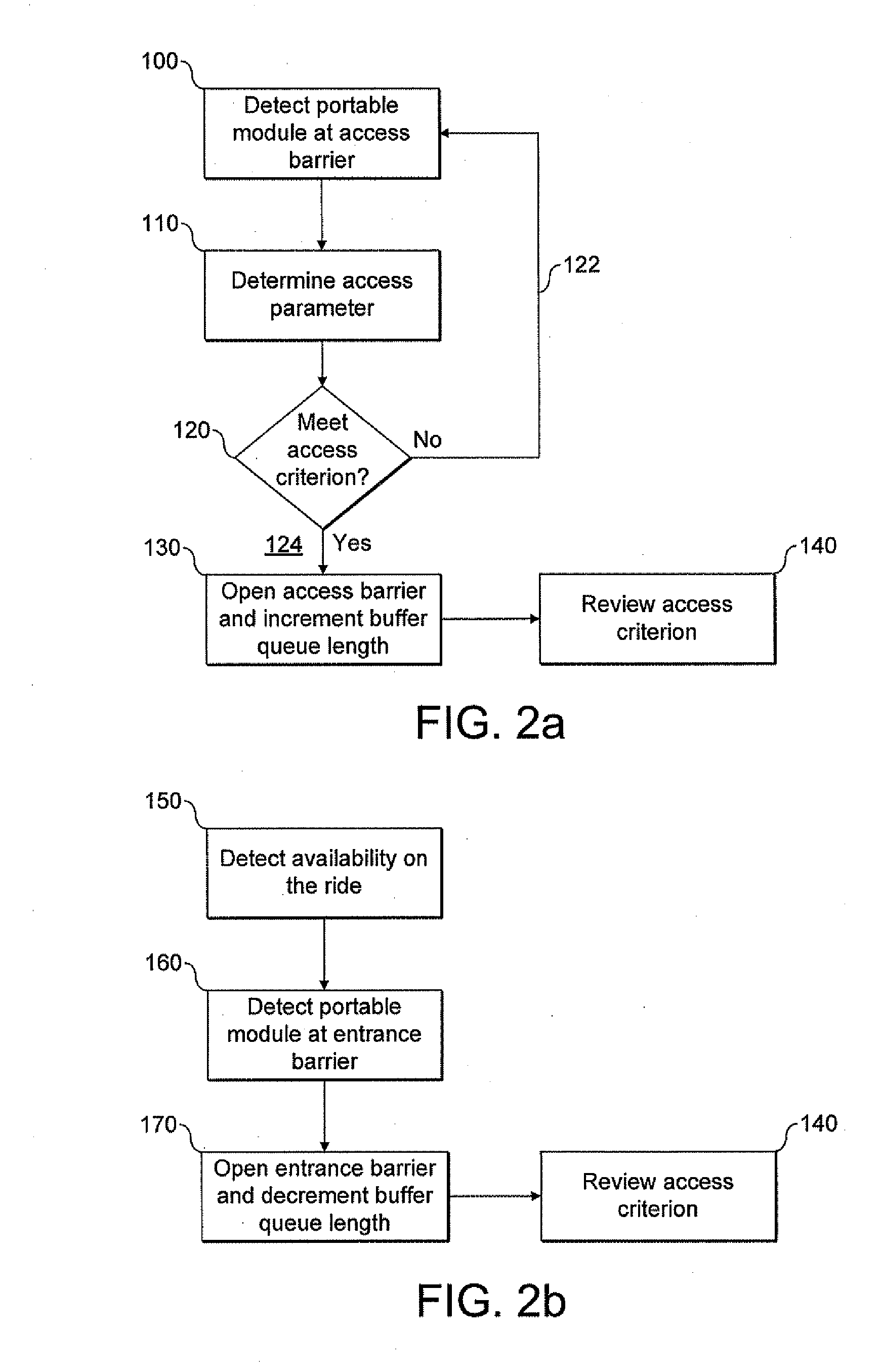System for regulating access to a resource
a resource and access control technology, applied in the field of system and method for regulating access to resources, can solve the problems of reducing the efficiency of managing access to resources and reducing the length of queues, and reducing the cost and complexity of the system, so as to improve the efficiency of the system and reduce the difficulty of queues
- Summary
- Abstract
- Description
- Claims
- Application Information
AI Technical Summary
Benefits of technology
Problems solved by technology
Method used
Image
Examples
Embodiment Construction
[0055]Referring first to FIG. 1, there is shown a first embodiment of the present invention. Each user is provided with a portable module 10. The user wishes to visit attraction 50. An access barrier 20 and an entrance barrier 30 are provided. The access barrier 20 and the entrance barrier 30 define an access queue 40. The access queue 40 can be further defined by other fences or barriers. Users wishing to use the attraction 50 must pass through access barrier 20 and entrance barrier 30 before reaching the attraction 50. The access barrier 20 has at least two states: a first, open state in which users can pass through the access barrier 20; and a second, closed state, in which the access barrier 20 prevents users from passing though. Similarly, the entrance barrier 30 has at least two states: a first, open state in which users can pass through the entrance barrier 30; and a second, closed state, in which the entrance barrier 30 prevents users from passing though.
[0056]The respective...
PUM
 Login to View More
Login to View More Abstract
Description
Claims
Application Information
 Login to View More
Login to View More - R&D
- Intellectual Property
- Life Sciences
- Materials
- Tech Scout
- Unparalleled Data Quality
- Higher Quality Content
- 60% Fewer Hallucinations
Browse by: Latest US Patents, China's latest patents, Technical Efficacy Thesaurus, Application Domain, Technology Topic, Popular Technical Reports.
© 2025 PatSnap. All rights reserved.Legal|Privacy policy|Modern Slavery Act Transparency Statement|Sitemap|About US| Contact US: help@patsnap.com



